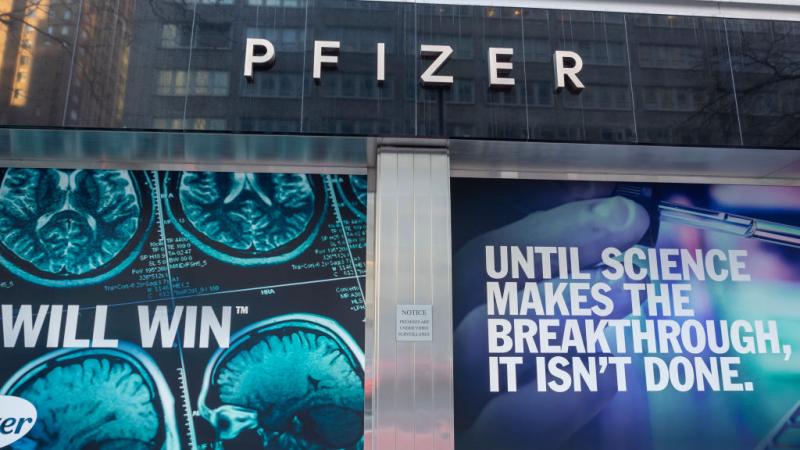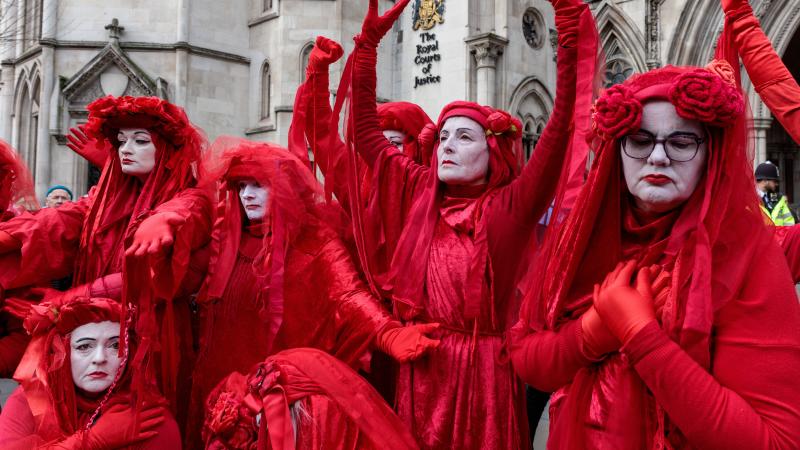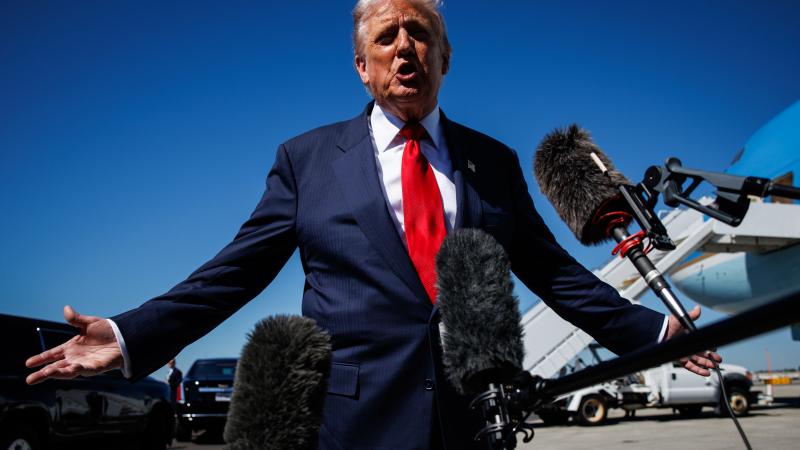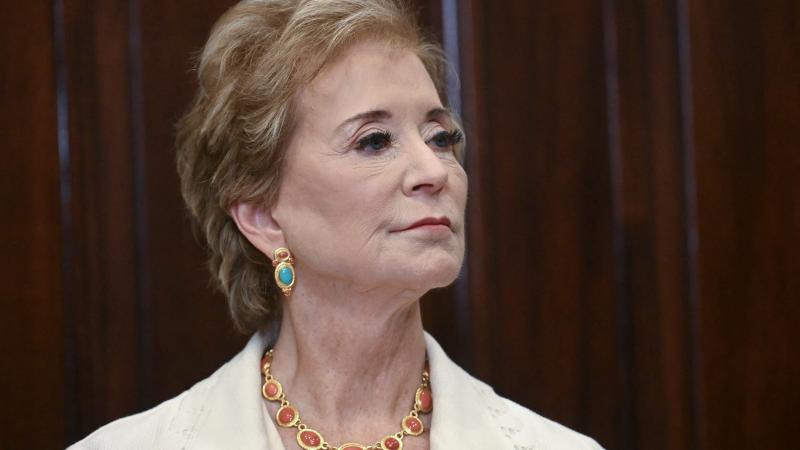Coronavirus: "Mother Nature's Last Warning"

Coronavirus could be “Mother Nature’s last warning."
Full transcript:
Sharyl Attkisson:
Hi, everybody. Sharyl Attkisson here. Welcome to another edition of the Sharyl Attkisson Podcast on justthenews.com, a digital news site dedicated to facts, nuts, spin and reporting on under-reported stories and views that cut across the grain, or may be ignored by other media outlets. I hope you'll subscribe to this podcast. And you can pre-order my new book coming out. It's called Slanted: How the News Media Taught Us to Love Censorship and Hate Journalism. You can pre-order Slanted anywhere. Today, I have an interview with an expert named Dr. Steven Hatfill about why he says COVID-19 was just a taste of pandemics to come.
If you know the name Dr. Steven Hatfill, it might be from an infamous incident that happened in the 2001-2002 time period. Hatfill had been a biodefense researcher at the US Army Medical Research Institute of Infectious Diseases at Fort Detrick, Maryland. And he'd also worked for National Institutes of Health. He was a biodefense expert, and it turns out he was wrongly blamed by the FBI, implicated in these anthrax attacks where somebody mailed deadly anthrax spores to some media and political figures in 2001. The FBI was leaking his name to the press. Somebody tipped off the news when they went to search his home and drain a pond and so on. So that was televised on TV, cable news. His phone was tapped. He was surveilled. He was followed around.
Well, he wasn't guilty. And after a long period of harassment, the government had to acknowledge that they cleared him in essence. They blamed somebody else down the road. He filed a lawsuit, the government settled, paid him something like $4.6 million. And unfortunately when the government settles a lawsuit like that, that's with our taxpayer money. So, they settled because they did something wrong. The FBI wrongly blamed him, but we all paid in the end. I kind of think of him as the Richard Jewell of the anthrax attacks. Richard Jewell was the security guard you may know that was wrongly blamed by the FBI for the Atlanta Olympic bombing.
Anyway, Dr. Hatfield continued his research after this terrible incident. By the way, he also got an award from the news media. I think that was also in the millions for sort of a defamation. It was a libel suit against Vanity Fair and Reader's Digest for what they had written about him implying that he was involved in the anthrax killings. But today he's an adjunct professor, assistant professor in the Department of Microbiology, Immunology and Tropical Medicine in the Department of Clinical Research and Leadership at George Washington University. He's also a senior fellow at the London Center for Policy Analysis. He has followed pandemics and the implications of not being prepared enough for quite a while.
He recently published a book called Three Seconds to Midnight. He and his co-authors put out this book last November. About the time that the coronavirus we believe now was getting a grip on China. Coincidentally, this book talks about pandemic preparedness and what should have been done and what needs to be done to make sure that we're better prepared for what he calls the age of pandemics and epidemics. So here is the interview with Dr. Hatfill. The title of your book, Three Seconds to Midnight, what does that mean?
Dr. Steven Hatfill:
The background at the time when the nuclear weapons were first developed, a group of scientists, physicists got together and they created something called the Doomsday Clock and its hands can be set forward or backward. And the 12 o'clock position represented nuclear war. And they would set it forward or backwards, depending on a variety of factors, what was happening in society and the environment and this type of thing. Right after we published our book, I think they advanced it to 100 seconds to midnight. Well, it probably should have been a little closer to 3:00. So it was just a way of judging the state of the world every year. You know, how crazy are we?
Sharyl Attkisson:
And Three Seconds to Midnight meant, in the view of you and the authors?
Dr. Steven Hatfill:
Pandemic.
Sharyl Attkisson:
Pandemic.
Dr. Steven Hatfill:
But a serious pandemic, like the 1918 influenza.
Sharyl Attkisson:
But isn't this a serious pandemic as well?
Dr. Steven Hatfill:
This isn't the one we're worried about. Let me tell you.
Sharyl Attkisson:
Really?
Dr. Steven Hatfill:
The one we're worried about has perhaps a 20% mortality rate.
Sharyl Attkisson:
Instead of fractional or?
Dr. Steven Hatfill:
Instead of fractional, or let's give it 1%. It's variable.
Sharyl Attkisson:
So this in your view is just a very small taste of what's possible.
Dr. Steven Hatfill:
It's a last warning, I think from Mother Nature.
Sharyl Attkisson:
Say it again. I'm sorry.
Dr. Steven Hatfill:
It's our last warning from Mother Nature.
Sharyl Attkisson:
So if Three Seconds to Midnight, would you say that book was about a warning and some advice in advance of this coronavirus epidemic, which we didn't know about at the time?
Dr. Steven Hatfill:
At the time. Over the last 10 years, I've had some time to myself where I could work on projects that I wanted to. And I started looking at our pandemic preparedness and in complete horror, I found out we didn't even have a national pandemic plan until 2005 when President George Bush put one together. Following 9/11, a very good book on influenza had come out. And I guess he read that and like talk to the CDC. And they're like, no, we don't have a plan. They tried in the '70s but they couldn't get everybody to agree what role they would play. So a lot of fanfare and this pandemic plan was released down at NIH. And if you read it, it's available on the internet, Pandemic Influenza Plan. It's like reading a legal document. You finish it and you don't know what you've read.
Well, Health and Human Services came out a few months later with meat on the bones. Okay. Here's our plan. The federal government is only going to do a couple of things because it's a federal government and we are a republic. We're going to stockpile certain medicines that we think may be beneficial. And we're going to issue those medicines until we can get a vaccine. We're going to get those medicines to one point in every state and it's up to the states now to distribute it to the local authorities. So it was a graded thing. They would handle things like the stimulus package. Look for a faster vaccine manufacturing method. President Trump did this a year before this outbreak, he had put into motion, a plan to totally bring vaccine production back to US soil. It's all made overseas. You can't have that and have a national defense. So everything was being brought back to the United States, vaccine production, even possibilities of making our own vital drugs here.
The states were responsible for changing the laws for allowing change standards of practice, public health deals with doing the most for the most people in the quickest amount of time. So standards of care get altered a bit. The states are supposed to provide laws for that for allowing the use of off-care sites. If the hospital starts to overflow, let's use the high school as an alternate care site and either move the normal patients out of the hospital or move the infected patients out. So we keep a hospital functioning and we're still handling the infectious disease cases. States didn't seem to do that. And then the local authorities, it was really clear, there was a checklist, stock up on mass and gloves, just basic personal protective equipment.
Sharyl Attkisson:
Before the pandemic or when the pandemic pass?
Dr. Steven Hatfill:
Before. They've had 15 years. Oh, here's $1 million for you to do it. There's these little grants. Well, I say little, but these small grants going out a million, two million, whatever to help local authorities do this. You need to make sure the ventilators, maybe buy an extra couple that you don't need this year because this is coming.
Sharyl Attkisson:
So that's what the plan said back in 2005?
Dr. Steven Hatfill:
And nobody did anything as you saw-
Sharyl Attkisson:
Before we go on just as a lay person-
Dr. Steven Hatfill:
... except the government. The government's kept commitment here and has gone past-
Sharyl Attkisson:
The federal government?
Dr. Steven Hatfill:
... the federal government, and they've gone completely over backwards, buying ventilators first. It's like the ant and the grasshopper, the fable, and the ants are working industriously and getting ready for the winter and the grasshopper's out playing the fiddle leaping around. And then winter comes and then the grasshopper freezes, the ants are fine.
Sharyl Attkisson:
Is there a way to quantify how much funding federal tax money has gone in for pandemic preparedness over the years? Because I know a lot has been spent and when this outbreak happened, I kind of wondered where that money went.
Dr. Steven Hatfill:
Since the mid-90s when the worry at that time was biological warfare or terrorism, whatever you want to call it, acknowledged amounts that have been peer-reviewed and published are about $70-80 million. Sorry, billion dollars.
Sharyl Attkisson:
You want to say that again as a sentence?
Dr. Steven Hatfill:
Yeah. So up until about the mid-2000s published peer-reviewed papers in, I think it was biodefense and biosecurity journal acknowledged that the US government had spent anywhere from $70-80 billion on biological preparedness, whether it's pandemic or intentional attack on a US city. My own estimates are around $120 billion.
Sharyl Attkisson:
How do you arrive at that?
Dr. Steven Hatfill:
Well, there's lots of hidden things that go on. For example, we spend about half a billion a year, just checking, well, we used to have a national stockpile it's empty now, but just checking on what's in these national stockpile sites. And some of the drugs have expired, so they have to be recertified yearly. Contractor developments, new technology investment, personal protective equipment for the military, all these little things that aren't really traditionally categorized as being part of biological defense.
Sharyl Attkisson:
So as a lay person, just watching on the outside, not to be armchair quarterback, but when the coronavirus outbreak happened, it seemed like a lot of things we were starting from scratch, from funding to where the ventilators and so on. If $70-120 billion been spent over the years.
Dr. Steven Hatfill:
Where did it go?
Sharyl Attkisson:
Yeah. Where did it go?
Dr. Steven Hatfill:
This was evident in 2014 when we couldn't handle a few Ebola patients that had managed to come over here from West Africa. That's really when my interest became very concerned.
Sharyl Attkisson:
I mean, I kind of thought there would be because billions have been given to hospitals to make sure there are beds, billions have been given to local communities and public health systems. I thought when there were pandemic concerns, it would almost be like a book you would open that would say, here's how we handle the borders. Here's what hospital beds can be fired up and how many we have that have gotten federal money, but it didn't seem like any of that happened.
Dr. Steven Hatfill:
Well, they tried to, people open the book. Okay. Let's break out our personal protective equipment stores. We don't have any. What? Well, yeah, we can run for about a week. Okay. How many ventilators do we have? We brought three a couple of years ago, extra ones. You see what I mean? It was the same thing in New Orleans, Hurricane Katrina. Do you know that six months before the levees broke in New Orleans FEMA, Federal Emergency Management Agency, the state and the local authorities with that Ray Nagin guy, I think, they had all gotten together and had a big exercise on how they would handle New Orleans if the levees broke from hurricane category four.
And it all worked. Everything, oh yeah, we're great. And then when push came to shove, the local authorities didn't do their role. And the whole thing fell to pieces, critically fell to pieces and it stayed a mess until who came in? The army. And the minute that general arrived, you just saw things happening and he saved the day, he and his people.
Sharyl Attkisson:
What's the message there?
Dr. Steven Hatfill:
Pandemics for any nation are a topic of national security. And Mr. Clapper said this years ago, "No other thing can change the geopolitical structure of the world, collapse governments and cause such chaos as a pandemic infectious disease." And we need to treat it as that. And unfortunately, the military doesn't want the job and I don't blame them. Their job is a completely different thing, but things happen in the world where you have to have a very defined chain of command. You've got to have people that you can rest assured will carry out a mission. You have to have a plan and you have to rehearse it. Not just once and let it fade from memory. You have to reverse it constantly.
We spoke about NORAD, North American Air Defense Command and the guys in the silos and the satellites looking for bombers. And you know, every now and then a Russian plane gets too close. There are the jets, US jets out of Alaska escorting it away. It's 24 hours a day, constantly rehearse. Those guys are just about... and gals. There's a very large number of female combat control crewman for missiles, just starting to get a little sleepy and the alarm goes off and you don't know if it's a drill or not. Constantly rehearsed all the way down from your warning. Occasionally one of those goes wrong and the countdown clock starts and it's a simulation. I think that's happened twice now, but there's fail-safes. That starts, the people doing that job are doing this job. The verification goes on real-time. The response goes on, message to the national command authority that we are under attack. And sometimes the president even plays. This is how you maintain something. And we've even let that slip over the last sort of, not this administration, but the one before.
Sharyl Attkisson:
More after a short break. And we're back with the interview with Dr. Steven Hatfill. When you talk about what could be next, that this is just a small taste of what could happen. And our enemies have seen how easy, relatively easy it could be to disrupt our entire society. Explain what you say, why you think there is something out there that could be that fatal and even more damaging.
Dr. Steven Hatfill:
Well, if we just look at the H1N1 avian influenza, these carry a very high mortality. Now they don't jump easily person-to-person, but it looks like it's just a few extra mutations are all that is needed to make it highly person-to-person transmissible. Now, whether it maintains its virulence or not, or whether it needs to at our population density. Look, Sharyl, we're living under population densities that are completely unnatural. No other species of large mammal has ever achieved our population densities. This is a great global experiment that we're all part of. And with respect to infectious diseases, we don't know how this is going to turn out. We've never done this in our species history before, globally.
Now we have air travel. I literally, real story, I was in Borneo and 24 hours later, I was in JFK Airport and the following day I was lecturing. And I was well within the incubation period of anything I could have picked up from the jungle. And I was in a wet market. I use it in one of the lectures, you can see all the animals all crammed together, transmitting. So this wasn't a factor before.
Sharyl Attkisson:
When you talk about it being sort of a matter of time, it makes me wonder, is there anything we could do to be properly prepared to minimize the big thing that would be coming even bigger than this horrible disaster?
Dr. Steven Hatfill:
Of course. If we're going to go... Our federal plan misunderstood the ability of the local authorities to look after themselves or to even care about doing it. Medicine has become so money-oriented that... You know when I was young, I used to fly a lot and we used to put suits on. It was really quite a thing to fly commercial. And they were always empty seats and everything. As a little kid, if you want to go sit by yourself, you get permission. There was never any trouble. Try it now it's like a Greyhound bus. Our computers have gotten very good at making sure every seat's filled. They're also very good at making sure every hospital bed is fully utilized so it's generating revenue. We don't have excess capacity. And that includes intensive care beds.
Hospital administration is a four-year degree. So we have to build in a search capability. And when you look at the wonderful behavior of our doctors and nurses and all health care providing staff, it's astounding. It was predicted that 40% wouldn't come to work. Studies had been done and interviews and questionnaires. Would you come to work if? Well, they did. And it's not just that, they were going into highly viral contaminated rooms with nothing more than a regular surgical mask in some cases. And they went in anyway. Well, that's America. So certain things have to be done. We need to get our manufacturing base back in the United States. Countries with only service economies don't have much say in things.
Sharyl Attkisson:
So we can fire up and make our medicine here and our equipment and so on.
Dr. Steven Hatfill:
Precisely. This is a matter of national security. And it's one that every American citizen can participate in when they vote and make decisions about things, which is essential for a republic to function. Make our stuff here. Let's get a real pandemic warning system in place. Most of the time, you don't have to get the military involved. You go in your suit and you're looking at the figures and it's a cooperating country. And if they're having trouble with this, you bring it back to the CDC, a sample, and everybody works together. And this gets sorted out.
In areas of conflict obviously, you need to send people in that can look after themselves that have a high degree of medical training, and this is special operations. If you're going to do that, give them some rapid what we call point-of-care devices. So maybe they can even make a diagnosis while they're there. And a lot of special operations are teachers. They teach foreign armies, or they teach guerrilla armies to overthrow a country. There's engineers involved, have them build an isolation clinic and teach them themselves how to isolate and do case contact tracing and try to keep it contained, or they can call in airdrops of equipment if they need it. It's very variable, their skills, and it can be tailor-made to a situation.
Bringing the first patients with Ebola back from West Africa, up until 2010, the United States Army had a team that did this operating out of Fort Detrick. They were called the Aeromedical Isolation Team. You can Google them. And their job they put on the space suits and they would go anywhere in the world and collect a scientist or American citizen or whatever soldier and bring them back, fly them back under containment. And the containment thing actually fit into the side of the Fort Detrick building. And it locked and a patient was pulled inside and they're in a spacesuit room. And all the doctors from Walter Reed would come up and practice doing their stuff, wearing the blue space suits. It was safe, it was effective.
2010 under the military sequence situation, that capability was lost. And then you need it four years later and you have to throw something together quickly and then use a Gulf Stream. Not really how you need to be doing something that doesn't have a cure and doesn't have a vaccine. You always need to err on the side of caution. So that team, what did it cost to keep up and running an exercise a couple times a year compared to I don't have the figures at hand they're in the book, but it was maybe $1.5 dollars USAID had spent trying to contain it and then getting the 101st Airborne over there. 3,000 soldiers and praying they don't get infected while they're building the isolation clinics in Liberia. That would have kept that little team running for the next 50 years. So penny wise, pound foolish.
Sharyl Attkisson:
That's Dr. Steven Hatfill. If you're interested in hearing more from Dr. Hatfill, I have additional segments of the interview at my companion podcast, Full Measure After Hours. And you can watch the interview on Full Measure, Sunday, May 31st. If you miss it on TV or you don't know where to watch, you can look for the interview, which will be posted online probably around noon by Sunday, May 31st, the interview with Dr. Hatfill. So please be sure and subscribe to Full Measure After Hours and the Sharyl Attkisson Podcast, for original information you won't usually see anywhere else.
I hope you enjoyed today's podcast. And I hope you check out all of the Just The News podcasts, wherever you like to listen. And a reminder, if you like the subject matter that I talk about in my podcast, I know you're going to love my new book, Slanted: How the News Media Taught Us to Love Censorship and Hate Journalism. You can support independent journalism by pre-ordering this book anywhere. Do your own research, make up your own mind. Think for yourself.













